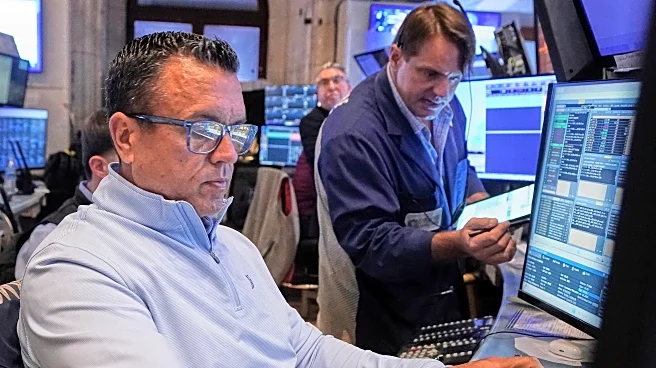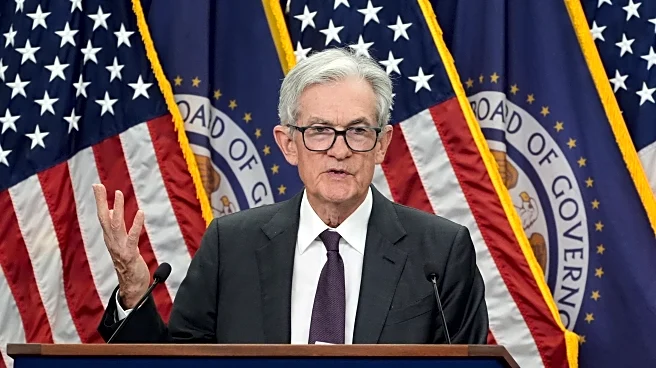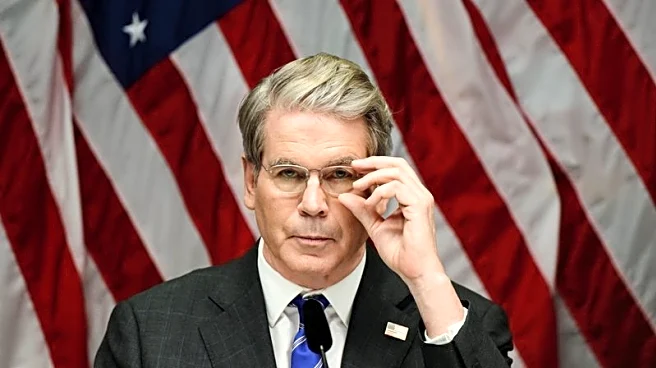NEW YORK (Reuters) -U.S. consumer prices increased moderately in July, largely in line with expectations, though rising costs for goods because of import tariffs led to a measure of underlying inflation posting its largest gain in six months.
The consumer price index rose 0.2% last month after gaining 0.3% in June, data showed. In the 12 months through July, the CPI advanced 2.7% after rising 2.7% in June. Economists polled by Reuters had forecast the CPI rising 0.2% and increasing 2.8% year-on-year.
Excluding the volatile food and energy components, the CPI rose 0.3%, the biggest gain since January, after climbing 0.2% in June. The so-called core CPI increased 3.1% year-on-year in July after advancing 2.9% in June.
MARKET REACTION:
STOCKS: U.S. stock index futures rose after the CPI data. The S&P 500 E-minis were slightly up on the day.
BONDS: The yield on benchmark U.S. 10-year notes was flat at 4.277%
FOREX: The dollar index slipped 0.1% to 98.406, while the euro rose 0.1% to $1.1622.
COMMENTS:
TOM PORCELLI, CHIEF US ECONOMIST, PGIM, NEW JERSEY:
"This is one of these better-than-feared outcomes. People are probably going to use this as a sign that the Fed could cut rates in September. And I don't doubt for a second that that's exactly how the market is going to react. The only thing I would caution, though is, it's going to take time for these tariffs to really show up in earnest."
"I think people that anyone waiting for this to show up in sort of one big move higher in any given month, that's not how it's going to be. It's going to sort of trickle in. The real peak inflation is not today. Peak inflation on the back of tariffs is actually months from now. And inventories in particular have really allowed companies to sort of mitigate some of the initial tariff thrust. So yes, we believe that the Fed is supposed to cut in September. It's been our long-standing call."
ADAM SARHAN, CHIEF EXECUTIVE, 50 PARK INVESTMENTS, NEW YORK:
"Inflation is moving closer to the Fed's target of 2% and that is a bullish thing because the lower inflation gets, the greater the chances are the Fed will cut rates. If you look at the data, the jobs report was weaker than expected and inflation was weaker than expected. That increases the odds the Fed will cut rates.'
"The economy is in a good place because inflation's coming down and that's exactly what both Trump and the Fed want...By the end of the year, I'd expect 50 basis points cut. If they cut more, that means the data would have to continue to weaken. If we get more weaker than expected jobs reports, then the Fed's going to cut more aggressively. But if the economy stays as is and inflation continues to come down, then that'll open the door for the Fed to cut."
GUY LEBAS, CHIEF FIXED INCOME STRATEGIST, JANNEY MONTGOMERY SCOTT, PHILADELPHIA:
"The July CPI was roughly in line with expectations and did not include very much tariff pass-through to consumer prices and is certainly good enough to lock in the odds of a September rate cut. There's more road between here and the 17th of next month, but at least as far as inflation data goes, this is pretty unconcerning."
"One thing that's notable is that the categories within the CPI that would normally be associated with tariffs were by and large pretty tame. So new vehicles, and we've heard a lot about how cross-border flows of vehicle parts are increasing prices there, they were unchanged month over month. Apparel, a huge portion of which is imported to the U.S., was up only a tenth month over month. And recreational goods, your baseball bats and other similar objects, also heavily imported, they were a little bit a little bit heavier, up four tenths, but still not very concerning. And you can go into some more detailed categories that show a similar picture."
"You can read this in one of two ways as an independent, unbiased economist type, which is that inflation will increase in the future because the tariffs haven't hit yet. Or you can read it as firms are eating the tariffs, so it's not going to hit consumer inflation. But I think either way is enough cover for the Fed for a September rate cut, assuming we don't get a big acceleration from next month's data."
SEEMA SHAH, CHIEF GLOBAL STRATEGIST, PRINCIPAL ASSET MANAGEMENT, LONDON:
"Although core annual inflation is back to its highest level since February, today’s CPI print is not hot enough to derail the Fed from cutting rates in September. There is some sign of tariff pass through to consumer prices but, at this stage, it is not significant enough to ring alarm bells."
"The concern for the Fed is that with inventory run-down, the tariff-induced boost to inflation is likely to grow over the coming months, meaning that inflationary pressures are likely to pick up just as the Fed starts to resume rate cuts. Markets like today"s inflation print as it means the Fed can lower rates unheeded next month – rate cut decisions in October, December and beyond may well be more complicated."
KARL SCHAMOTTA, CHIEF MARKET STRATEGIST, CORPAY, TORONTO"
"Underlying inflation remains subdued, giving policymakers room for maneuver as they respond to signs of incipient weakness in labor markets. Chair Powell should put a September cut on the table when he speaks at Jackson Hole on the 21st."
"But the American economy's turn toward isolationism and autarky is still underway, and price pressures might begin to build in the coming months as tariffs hit tradeable goods and immigration controls begin pushing services costs higher. The prevailing market narrative could shift directions several times over the coming months."
ALEXANDRA WILSON-ELIZONDO, GLOBAL CO-CIO OF MULTI-ASSET SOLUTIONS, GOLDMAN SACHS ASSET MANAGEMENT, NEW YORK: (VIA EMAIL)
"July's CPI figure came in in-line with expectations, with core inflation at 3.1% year over year. The Fed is getting the data support that the tariff effect on price level will mostly be transitory. Tariffs have yet to drive substantial price increases, as companies continue to offset cost pressures by drawing down inventories and adjusting prices cautiously due to perceived consumer price sensitivity. The Fed's policy stance is highly data-dependent, and with inflation contained and labor market softness increasingly evident in revised payroll data, the emphasis will now be skewed toward employment. In essence, this inflation print supports the narrative of an insurance rate cut in September, which will be a key driving force for the markets."
BEN LAIDLER, HEAD OF EQUITY STRATEGY, BRADESCO BBI, LONDON:
"The market is taking a lot of comfort from the headline number, which came in a little bit lower than expected. On the face of it, it's validating this overwhelming consensus for a Fed rate cut in September, however we:re a bit cautious on that."
"When you look at the core number, it's maybe not as much as a slam dunk as the market may think. We don't think this report is quite as good as the market maybe initially taking it out. We're going to get a lot more information at the Jackson Hole Symposium where we're going to get some guidance from Powell as to what's going to happen in September."
"The market is going to continue to overwhelmingly price this September cut. The odds are not quite as firmly stacked as the market would think. When you scratch the surface, the core inflation number, which the feds focus is not as good a reading as the headline number. That said, the Fed is going to come under an awful lot of pressure to give some guidance at Jackson Hole and the market will be very disappointed if you don't get a September cut."
JUAN PEREZ, DIRECTOR OF TRADING, MONEX USA, WASHINGTON:
"Thus far it looks like the U.S. dollar is down as a result of CPI coming in basically just as expected. Markets seem eager to price in more than just one interest rate reduction for the year, but these numbers suggest inflation remains growing though at a slow pace."
BRIAN JACOBSEN, CHIEF ECONOMIST, ANNEX WEALTH MANAGEMENT, BROOKFIELD, WISCONSIN: (VIA EMAIL)
"The core message in core inflation is that any tariff-induced inflation is likely to be a process, not an event. Eventually, tariffs can show up in varying degrees in consumer prices, but these one-off price increases don’t happen all at once. That will confound the Fed and economic commentators for months to come. As long as breakeven inflation rates and other market based measures of inflation expectations stay contained, the Fed should feel comfortable enough to recommence cutting in September."
(Compiled by the Global Finance & Markets Breaking News team)












